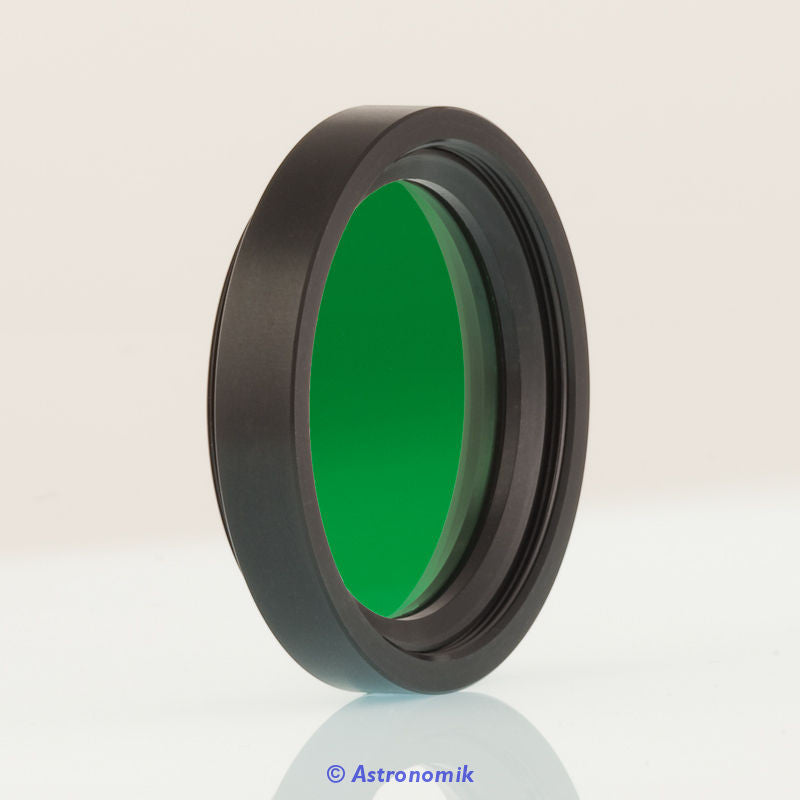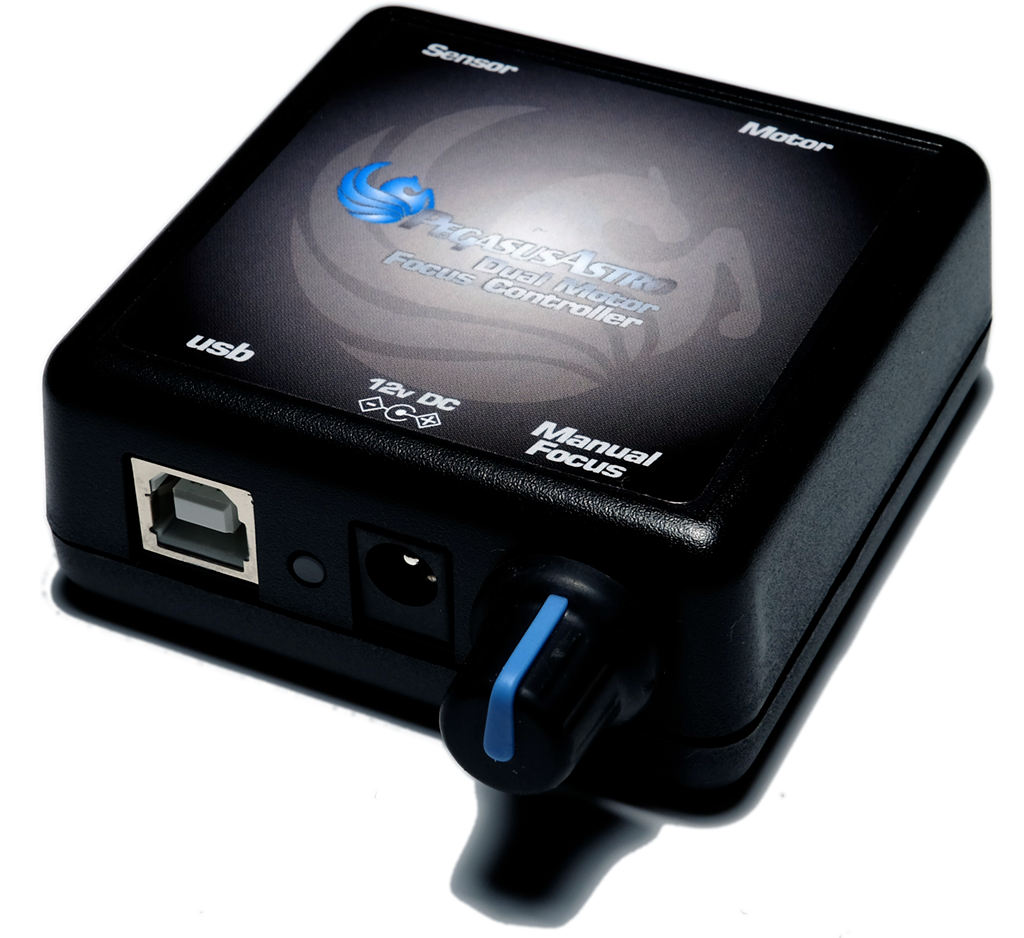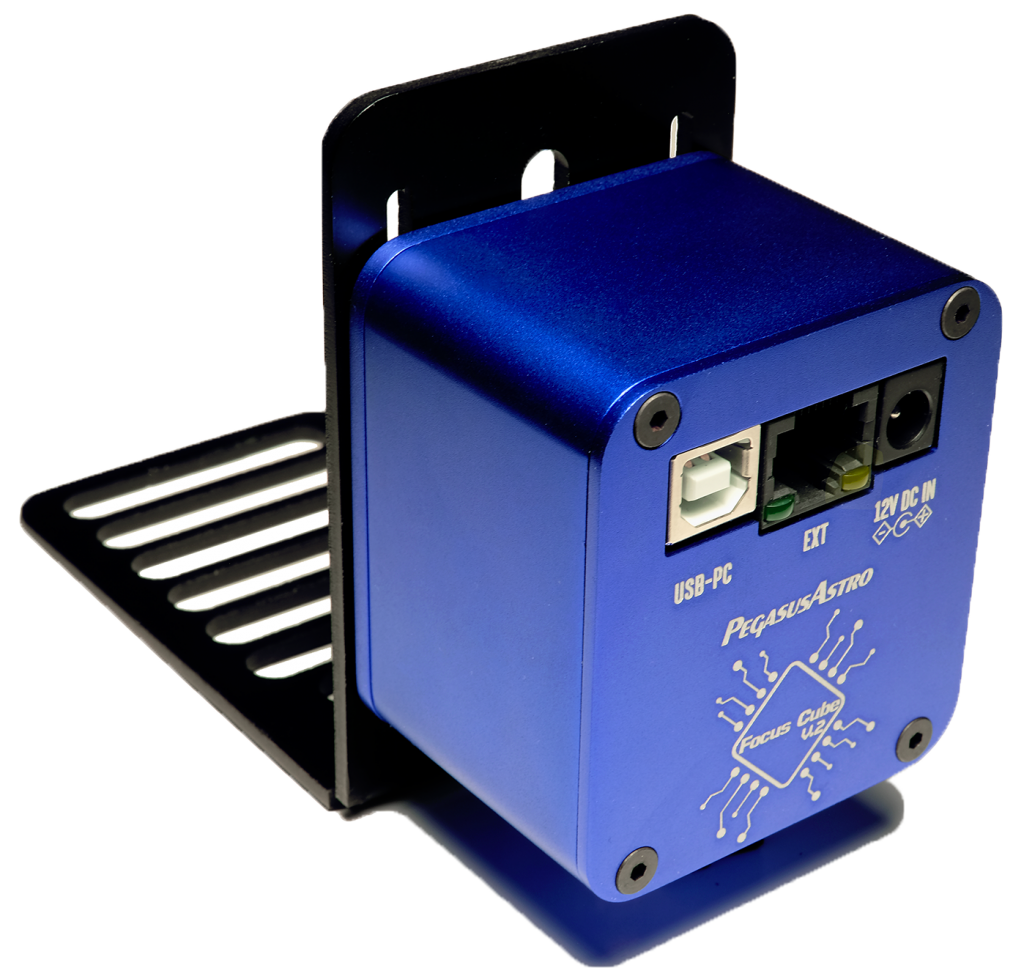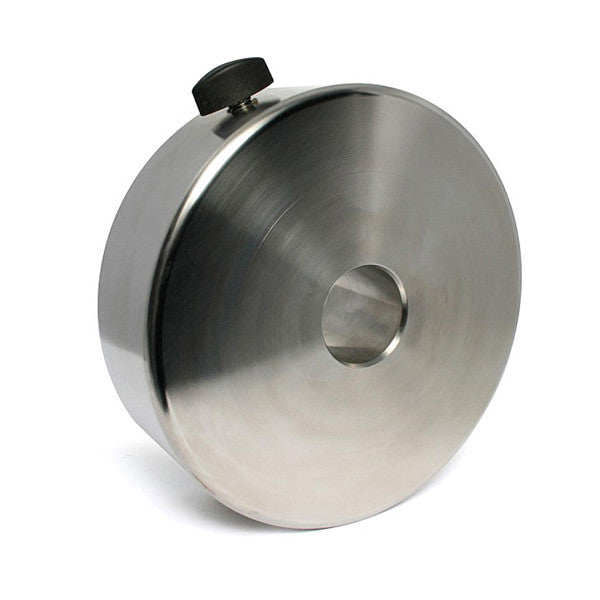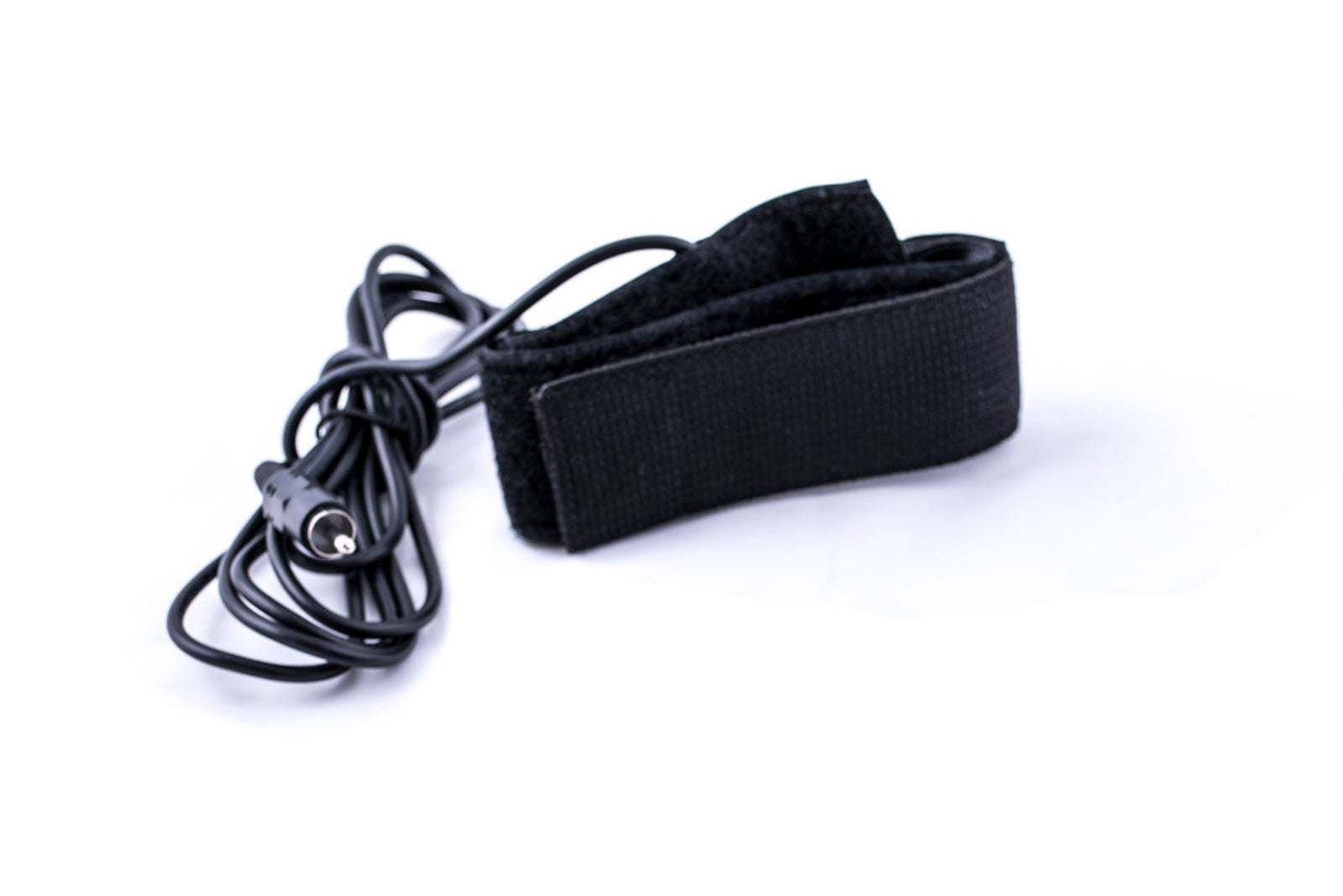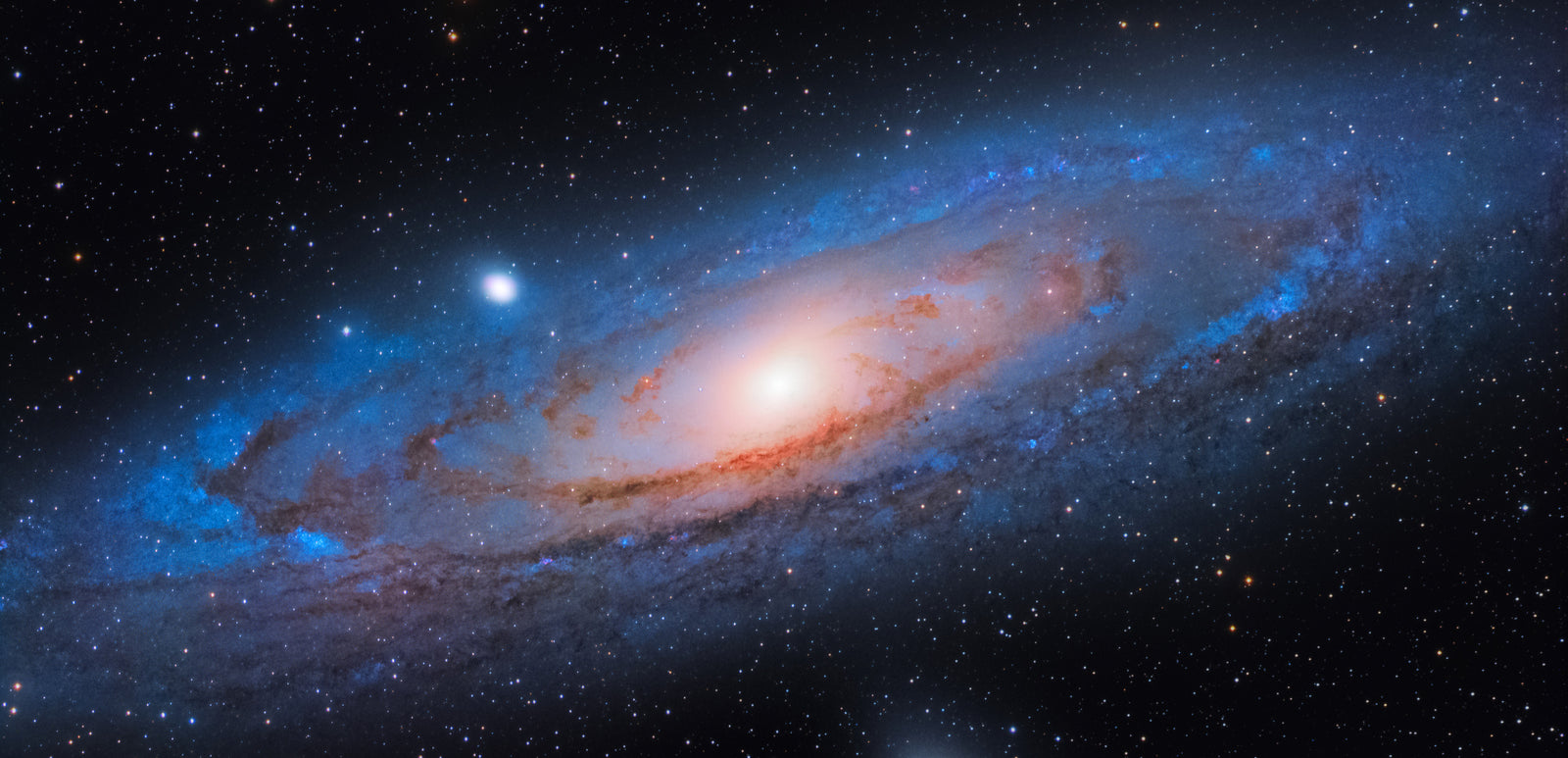Introduction to Filters
Filters are an essential accessory for any astrophotographer, and they can often improve the view visually as well. With so many options out there, it can be tricky to pick the right one for your setup. On this page, we'll go over the different characteristics of filters, and what makes one better than another to help you decide which is best for you.
Filters for Astrophotography
For deep sky astrophotography, which filter you use depends heavily on which object(s) you're trying to photograph. In outer space, some objects emit light across broad parts of the spectrum (broadband), while others emit light in very narrow wavelengths of the spectrum (narrowband), and each are best captured with different filters. For broadband targets like galaxies, you want to use a filter that can let in a broad part of the spectrum or no filter at all. Unfortunately, light pollution overlaps with most of the same broad part of the visible spectrum that galaxies do. Because of this, you either need to use a light pollution filter to block it out, or even better, go to a dark sky location to capture the image.
Other targets, like emission nebulae, emit light at very specific wavelengths which are known as emission lines. Although you can use broad bandpass filters to capture emission nebulae too, narrowband filters that only let in light from these emission lines are an even better choice for two reasons. First, narrowband filters can isolate just the nebulae from the background, which increases contrast and creates an overall more pleasing image. Second, because they only allow light to pass from such a small sliver of the spectrum, you can use narrowband filters without much effect from light pollution, allowing you to image narrowband targets from a light-polluted city. The downside is that because they let in such little light that you'll need much longer exposure times to get a useable image. For that reason, you'll need a high-quality equatorial mount that can accurately track the night sky for many minutes at a time, so narrowband imaging isn't recommended for beginners. These are the four most common emission lines used for amateur astrophotography:
Hydrogen Alpha (Hα) | Hydrogen Beta (Hβ) | Sulfur II (SII) | Oxygen III (OIII)
Hydrogen Alpha (Ha) is by far the most common, and emission nebulae in particular are made up of 90% hydrogen gas. Ha is naturally red in color, which is why most pictures of emission nebulae are red. Other gases, like Oxygen III (OIII), are blue/green in color. Here are the most commonly photographed objects and their recommended type of filters for both color (full-spectrum) and monochrome cameras:
| Target Type |
For Color Cameras |
For Mono Cameras |
| Galaxies |
Light Pollution or UV/IR Cut
|
LRGB, Ha |
Emission Nebulae
Planetary Nebulae
Supernova Remnants |
Multi-Narrowband |
Ha, OIII, SII (Narrowband) |
Reflection Nebulae
Dark Nebulae
Star Clusters |
Light Pollution or UV/IR Cut
|
LRGB
|
| Milky Way |
None or Light Pollution |
LRGB, Ha
|
| Planets |
None or UV/IR Cut |
RGB, IR Pass
|
| Moon |
None or UV/IR Cut |
RGB, IR Pass
|
| Sun |
Solar Filter (Required) |
Ha Solar Filter (Required) |
Filters for Visual Use
Although you can absolutely use a telescope visually without any filters at all, visual filters can improve the view through the eyepiece in a few different scenarios:
- Perhaps the most common type of visual filter is a neutral density filter used to observe the moon. Neutral density/moon filters cut down the incoming light, which is very helpful when looking at the extremely bright gibbous or full moon.
- Another common type of visual filter is a light pollution filter. These come in many forms, and some subtypes are known as nebula filters, UHC filters, CLS filters, line filters, and more, but they all block out some unwanted light to view nebulae, specifically letting in blue/green light which are best used on planetary nebulae and supernova remnants.
- Solar filters are made for specifically looking at the sun and nothing else. Unlike other filters that attach to the eyepiece, solar filters usually go in front of the telescope's aperture to cut down the incoming light. Unless you're using a dedicated solar telescope, a solar filter is the only safe way to look at the sun through a telescope.
Multi-Narrowband Filters

Best for imaging nebulae with full-spectrum color cameras
Multi-narowband filters are a relatively recent addition to the astrophotography scene, but they have taken the community by storm. Multi-narrowband filters work by allowing multiple narrow bandpasses of light to come in simultaneously. This allows two, three, or four of the most important bandpasses like Ha, SII, OIII, and Hb to pass through at once. This means that you don't need to use individual narrowband filters for each bandpass, saving hours of exposure time. For this reason, multi-narrowband filters are most effectively utilized on full-spectrum color cameras, like modified DSLRs or One Shot Color cameras.
The catch is that many multi-narrowband filters have wide bandpasses like 10nm or more, which may not be enough to stop light pollution from sneaking into the image if using it under city lights. Only a select few multi-narrowband filters have narrow enough bandpasses (7nm or less) to effectively isolate emission nebulae from heavily light-polluted skies. Although these filters are primarily used on color cameras, multi-narrowband filters also make for excellent luminance filters for monochrome imaging. Unlike a standard luminance filter which allows most of the spectrum through, a multi-bandpass filter can isolate specific bandpasses for emission nebulae and keep light pollution out.
Explore Multi-Narrowband Filters
Narrowband Filters

Best for imaging nebulae with monochrome cameras
Narrowband filters are usually used on monochrome cameras, and can provide some of the most stunning images of the night sky. These filters isolate highly-specific wavelengths emitted from objects in space, namely emission nebulae, planetary nebulae, and supernova remnants. By doing so, it becomes possible to isolate nebulae from the background of space, which gives the image higher contrast and sometimes even a three-dimensional look to them. Narrowband filters let in very little light. The plus side to this is that you can use them anywhere, even from within heavily light-polluted cities with a narrow enough bandpass. The downside is that you'll need an equatorial mount that can allow for very long exposures without star trails.
Because narrowband filters only let in one specific color at a time, you need to use at least two or ideally three different narrowband filters to create a color (red, green & blue) image with a monochrome camera. This means you need to be able to easily switch between narrowband filters when imaging, and perhaps the best way monochrome imagers do that is by using a filter wheel in the imaging train. Compared to a color camera, the added cost of a filter wheel and narrowband filters can be much more expensive. However, narrowband filters with a monochrome camera can produce spectacular images, and most advanced imagers prefer them over color cameras for their detail.
Explore Narrowband Filters
Light Pollution Filters

Best for imaging targets like galaxies from light pollution with color cameras
Light pollution filters are the ideal choice for imaging faint broadband targets like galaxies, reflection nebulae, and more from under light-polluted skies. Although there is no true substitute for imaging from a dark sky site, light pollution filters can come close. These filters are designed to only block certain wavelengths of light that are most commonly emitted by streetlights and other artificial light sources. Without a light pollution filter, the sky background in images can appear to have an unwanted orange cast to them. With a good light pollution filter, the sky appears its normal dark blue color while still retaining detail in deep sky objects. Unlike multi-narrowband and narrowband filters which generally require full-spectrum astronomy cameras for best results, light pollution filters can be used even with DSLRs and Mirrorless cameras and work best on almost all deep sky objects. If you live in an urban or suburban area, a light pollution filter is a must for imaging galaxies and similar broadband objects.
Explore Light Pollution Filters
Solar Filters

Specifically designed for visually observing or imaging the sun
We'll get this out of the way: never look at or photograph the sun through a telescope without a proper solar filter. The exception to this would be if you're using a dedicated solar telescope. The sun is extremely bright, so using a solar filter to cut down the incoming light dramatically is the only way to observe and image it safely. There are two main types of solar filters: white light filters and h-alpha filters. White light filters are either made of film or darkened glass that go over the front end of the telescope, and are relatively affordable. H-alpha solar filters, on the other hand, are significantly more expensive, and primarily meant to be used with existing dedicated solar telescopes as an upgraded accessory. H-alpha solar filters can provide incredible views and images of our home star. Find the right solar filter for your telescope below.
Explore Solar Filters
Planetary Filters

Best for capturing intricate details of planets
Planetary imaging is most commonly done with a color camera or a monochrome camera and color filters, but some planetary imagers yearning to draw out more details may want to look into planetary imaging filters. Each planet has their own features that can be teased out with different filters. For example, Jupiter & Saturn can reveal more details with an infrared (IR) pass filter. If you find you're not satisfied with standard RGB filters for planetary astrophotography, a planetary imaging filter might be best for you.
Explore Planetary Filters
Visual Filters

Best for enhancing visual observing through a telescope
Visual filters have many purposes, from moon filters that darken the moon for more comfortable observing, to light pollution filters that help enhance views of nebulae under brightly-lit skies. Other visual filters include planetary viewing filters, polarizing filters, line filters, and more, depending on your target. While visual filters aren't always needed, they can certainly have an effect on specific targets like planetary nebulae and supernova remnants, bringing out details otherwise not visible even with a telescope alone.
Explore Visual Filters




